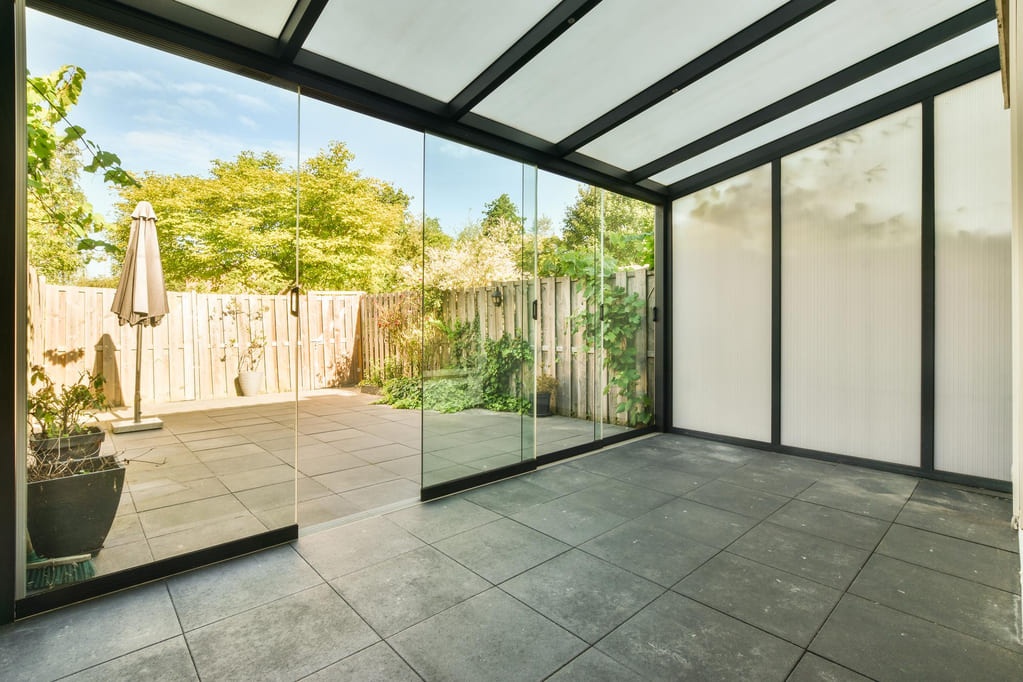How to roof a terrace without losing light? If this is a question you’re asking yourself, you’ll be pleased to know that there are now several options available to cover a terrace without sacrificing natural light, while also maintaining a controlled temperature inside. It’s an effective solution for enjoying your outdoor space all year round.
There are various options that allow you to retain brightness while also protecting against the elements. However, it’s important to evaluate different materials and structures. Each option has its own advantages, and you should take into account local regulations and the specific design of your space. In this article from Leba, a construction company in Málaga, we present the best options. Keep reading!
Materials for roofing a terrace without losing brightness
Choosing the right materials is crucial when roofing a terrace . They not only affect the aesthetics of the space but also influence the amount of natural light preserved, thermal insulation, and protection from the weather. In this case, the best options for roofing a terrace without losing light are glass enclosures. Let’s take a look at the options!
Enclosures with laminated safety glass
Laminated safety glass is an excellent choice for roofs and enclosures. It consists of two or more layers of glass bonded with an interlayer, which increases its strength and safety. Ideal for those seeking a robust enclosure, it offers several advantages:
- High transparency: Allows more than 99% of natural light to pass through, keeping the space bright.
- UVA protection: Helps create a cooler and more comfortable interior.
- Sound insulation: Significantly reduces external noise.
In the event of breakage, the glass pieces remain attached thanks to the laminated layer, minimising the risk of accidents. This makes it ideal for terrace enclosures where safety is paramount.
Laminated safety glass with solar control
Similar to standard laminated glass, solar control glass also maintains high transparency but reduces the transmission of UV rays. This type of glass has 95% transparency and blocks 99% of ultraviolet rays. This way, you can enjoy natural sunlight without its harmful effects on your furniture or skin. Although it’s a highly recommended option, it tends to be more expensive than other alternatives.
Polycarbonate
Polycarbonate, also known as PVC, offers a wide range of options, from versions with up to 99% transparency to more opaque but translucent versions.
It’s a more economical material than glass, although it does have some disadvantages. In its transparent form, the high transmission of light can result in excess heat inside, as it allows a lot of solar energy to pass through. For this reason, many people prefer to use semi-transparent polycarbonate, which reduces the amount of light entering and prevents the space from overheating.
Types of roofs that retain natural light
In addition to the material, it’s essential to choose the right type of roof to cover your patio without losing light. The main options include fixed roofs, retractable roofs, and bioclimatic pergolas:
Fixed Roofs
These are permanent roofs that remain closed once installed. This is the most common type of cover. To maintain light in your patio, it’s advisable to use transparent or semi-transparent materials.
Retractable roofs
These roofs are made up of sliding modules that allow them to be opened and closed. The options include:
- Transparent material: Maintains a high level of light whether open or closed, and allows for ventilation and cooling of the space.
- Translucent material: Increases light when the roof is open but offers greater privacy and helps keep the temperature lower.
- Opaque material: Materials such as aluminium or sandwich panels provide opacity, and you can let light in by simply opening the roof.
Bioclimatic pergolas
These are very popular due to their modern and functional design. They offer both advantages and disadvantages. Among the benefits is the ability to control light and ventilation through adjustable slats, allowing adaptation to different weather conditions. Moreover, their aesthetic design adds a contemporary touch to outdoor spaces, and they can be integrated with automated technology for added convenience.
On the other hand, the disadvantages of these pergolas are that they may require more frequent maintenance, especially if advanced technology systems are used. The initial cost can be quite high, particularly for automated models, and their effectiveness in thermal control depends on the correct orientation and design of the structure.
So, how can you roof a terrace without losing light?
Taking all these factors into account, the most recommended option for roofing a patio without losing natural light is to combine a laminated safety glass enclosure with a retractable roof. This combination maximises natural light while offering both security and flexibility. However, it’s also important to consider other aspects, such as the available budget and the size of the patio, to make the most appropriate decision for each situation.
If you found this article on how to roof a terrace without losing light helpful, we recommend continuing to read our blog. We keep you up to date with the construction sector. You can continue with: Natural lighting in indoor spaces.


